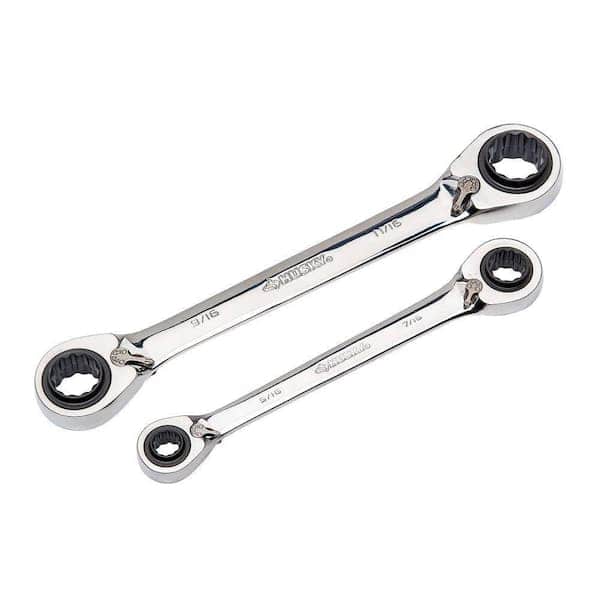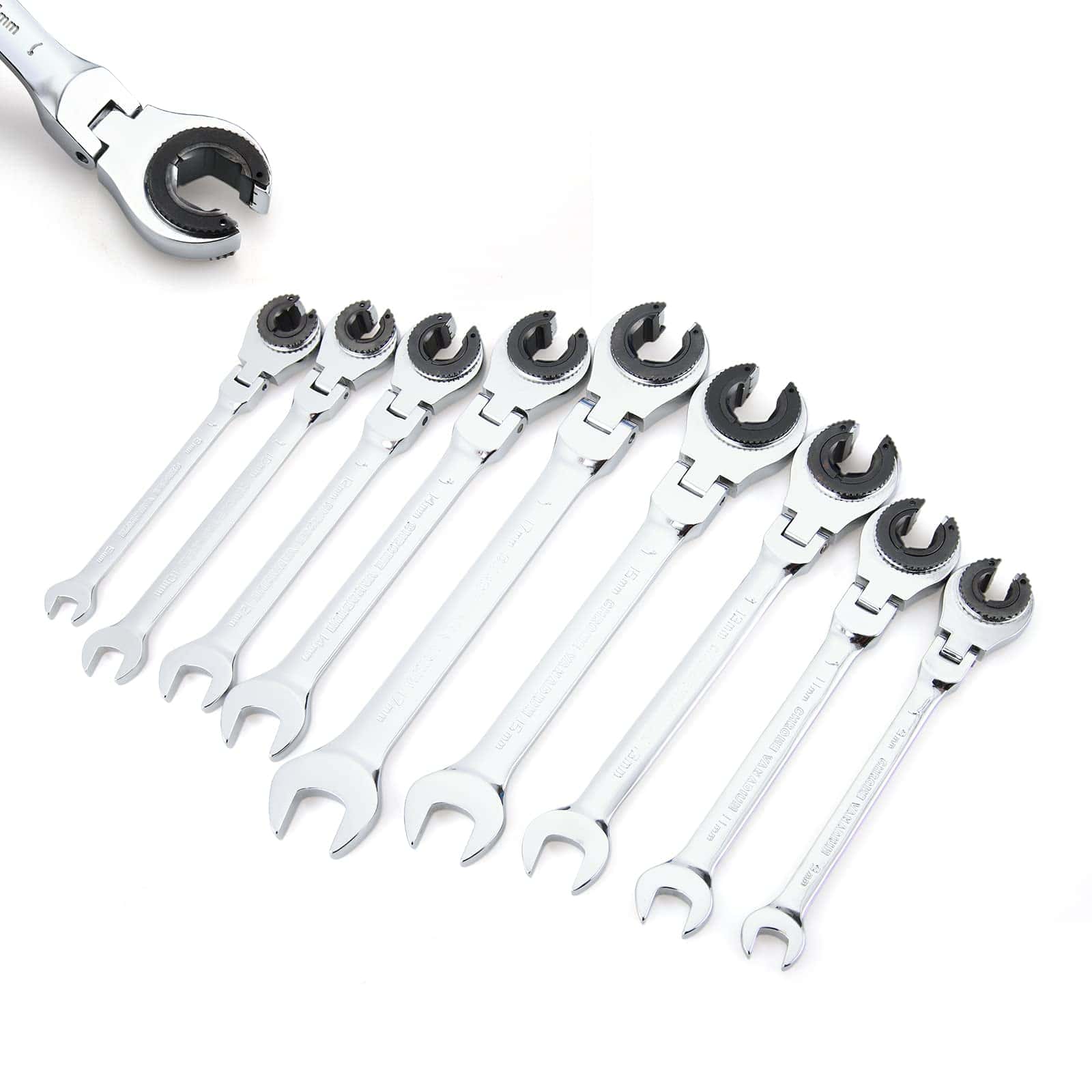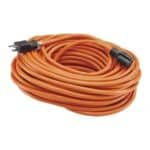A ratchet wrench is a handy tool for mechanics and DIY enthusiasts. It’s used to tighten or loosen nuts and bolts quickly. Ratchet wrenches save time and effort when working on cars, bikes, or home projects.
This tool has a special design. It lets you turn the wrench in one direction without removing it from the bolt. This makes it faster than a regular wrench. You can switch the direction to tighten or loosen as needed.
Ratchet wrenches come in different sizes. They work with various sockets to fit different nuts and bolts. Pros use them a lot but they’re great for home use too. They help with tasks like fixing appliances or putting together furniture.

Fundamentals of Ratchet Wrenches
Ratchet wrenches are key tools for working with nuts and bolts. They make it easy to tighten or loosen fasteners quickly. These tools come in different types and sizes to fit various jobs.
Design and Mechanics
A ratchet wrench has a handle and a ratcheting head. The head holds sockets that fit over nuts or bolts. Inside the head is a gear and pawl system. This system lets the wrench turn in one direction but not the other.
The ratchet has a switch to change directions. This lets you tighten or loosen fasteners without taking the wrench off. You can turn the handle back and forth in tight spaces.
Most ratchets have a square drive on the head. This is where you attach sockets. Common drive sizes are 1/4 inch, 3/8 inch, and 1/2 inch.
Types and Varieties
There are several types of ratchet wrenches:
- Standard: The most common type
- Flex-head: Has a pivoting head for odd angles
- Extendable: Has a handle that can get longer
- Gearless: Uses a smooth mechanism instead of teeth
Some ratchets have special features. These might include a quick-release button or comfort grips. Ratchets also come in different lengths. Longer handles give more leverage for tough jobs.
Size and Measurement Standards
Ratchet wrenches use two main size systems:
- SAE (inches)
- Metric (millimeters)
SAE sizes are common in the US. Metric is used in most other countries. Many socket sets include both types.
Socket sizes match the size of nuts and bolts. Common SAE sizes range from 1/4 inch to 1 inch. Metric sizes often go from 4mm to 32mm. Some specialty sockets, like Torx, have their own sizing.
Here’s a quick size comparison:
| SAE (inches) | Metric (mm) |
|---|---|
| 3/8 | 10 |
| 1/2 | 13 |
| 5/8 | 16 |
Choosing the right size is crucial for a proper fit. This prevents damage to the fastener and ensures safe use.
Practical Usage and Applications
Ratchet wrenches are handy tools for many jobs. They help tighten and loosen nuts and bolts quickly and easily. These wrenches are useful in tight spots and save time on big projects.
Operational Techniques
To use a ratchet wrench, first pick the right size socket. Attach it to the wrench head. Place the socket over the nut or bolt. Turn the handle to tighten or loosen. The ratcheting mechanism lets you turn in one direction without removing the wrench.
For tightening, turn clockwise. For loosening, go counterclockwise. Most ratchets have a switch to change direction. In tight spaces, use short swings of the handle. This helps you work in small areas.
Remember to keep the wrench straight on the fastener. This prevents slipping and damage. For extra force, use a longer handle or add an extension bar.
Common Use-Cases
Ratchet wrenches shine in many tasks:
- Car repairs (changing tires, oil changes)
- Bike maintenance
- Furniture assembly
- Plumbing fixes
- Appliance repairs
They’re great for DIY projects at home. Pros use them in garages, factories, and construction sites.
These tools excel in tight spots. Think under-hood car work or inside appliances. The ratchet design lets you turn nuts in small spaces where normal wrenches can’t fit.
For bigger jobs, ratchets speed up work. You can loosen or tighten many bolts quickly. This saves time on large projects like engine repairs.
Advantages over Traditional Wrenches
Ratchet wrenches beat old-style wrenches in many ways:
- Speed: No need to reposition after each turn
- Ease: Less arm strain during long jobs
- Reach: Work in tight spots regular wrenches can’t
- Versatility: One tool fits many nut sizes
The ratchet design means faster work. You don’t lift the wrench off the nut each time. This makes big jobs much quicker.
Ratchets also give better leverage. The long handle helps turn stubborn bolts. And the socket design grips nuts securely, reducing slips.
For pros, ratchet sets are must-haves. They offer precision and efficiency. DIYers find them user-friendly for home projects. The mix of speed, strength, and ease makes ratchet wrenches top tools for many jobs.
Frequently Asked Questions
Ratchet wrenches are handy tools for working with nuts and bolts. Let’s look at some common questions about how to use them.
How does one use a ratchet wrench to tighten bolts?
To tighten bolts with a ratchet wrench:
- Pick the right size socket
- Attach it to the ratchet
- Set the ratchet to tighten (usually clockwise)
- Put the socket on the bolt
- Turn the handle to tighten
The ratchet lets you turn the bolt without taking the wrench off each time.
What differentiates a socket wrench from a ratchet wrench?
A socket wrench is the whole tool set. It includes:
- The ratchet handle
- Sockets of different sizes
- Extensions and adapters
The ratchet is just the handle part. It holds the sockets and lets you turn them easily.
In what scenarios is a ratchet more advantageous than a standard wrench?
Ratchets work better than regular wrenches when:
- You need to turn a bolt many times
- There’s not much room to move the wrench
- You want to work faster
Ratchets let you keep turning without taking the wrench off the bolt.
What is the functionality and purpose of a ratchet in tool operations?
A ratchet has a special gear inside. This gear:
- Lets the handle turn one way freely
- Grips and turns the bolt when you go the other way
This means you can turn bolts quickly without taking the tool off.
How is a socket wrench set typically utilized?
To use a socket wrench set:
- Pick the right size socket for your bolt
- Snap it onto the ratchet handle
- Put the socket on the bolt or nut
- Turn the ratchet to tighten or loosen
You can switch sockets easily for different size bolts.
What are the steps to using a socket wrench with an extension bar?
To use a socket wrench with an extension:
- Attach the extension to the ratchet
- Put the socket on the end of the extension
- Use it like normal but now you can reach farther
Extensions help you get to hard-to-reach bolts.







